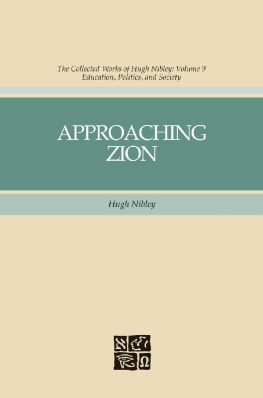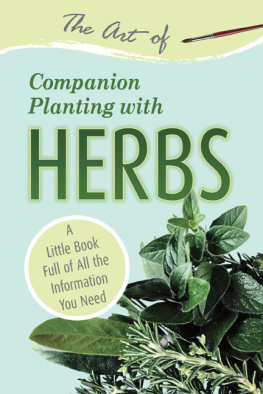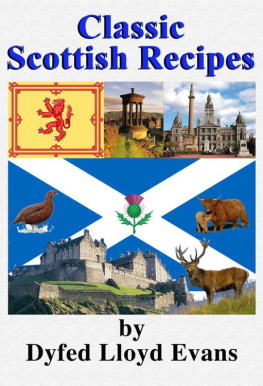
The Hogmanay
Companion
Hugh Douglas
Illustrations by Keith Horrox
Neil Wilson Publishing Glasgow
The Estate of Hugh Douglas, 2011
First published in 1993
by Neil Wilson Publishing Ltd
G/2 19 Netherton Avenue
GLASGOW
G13 1BQ
T: 0141 954 8007
F: 0560 150 4806
E:
W: www.nwp.co.uk
The author asserts his moral right to be
identified as the author of this work.
Second edition published Oct 1999.
Revised edition published Nov 2000.
Reprinted Dec 2010.
Print Edition ISBN: 978-1-897784-93-8
Ebook ISBN: 978-1-906476-26-7
To all my family and
the many, many friends
who have shared Hogmanays
in Scotland and in England
over the years.
To Ane and A
A Guid New Year and mony o them!
Other books written by the author:
Robert Burns A Life
The Burns Supper Companion
Flora Macdonald The Most Loyal Rebel
The Underground Story
Crossing the Forth
Portrait of the Burns Country
Edinburgh, A Childrens History
Burke and Hare, The True Story
Charles Edward Stuart The Man, The King, The Legend
Minishant is a Bonnie Wee Place
(with Henrietta Douglas)
The Private Passions of Bonnie Prince Charlie
Robert Burns: The Tinder Heart
Jacobite Spy Wars Moles, Rogues and Treachery
The Flight of Bonnie Prince Charlie
(with Michael J. Stead)
Contents
Introduction
A Happy New Year to all the World
PEOPLE say that you havent had a good Hogmanay if you can remember much about it, and they may well be right. But all of us in Scotland have a host of memories of Hogmanays past and hopes for Hogmanays to come. Whether we achieve them or not makes no difference if the dreams are there Hogmanay has achieved one of its objectives. And that is as life ought to be.
New Years Eve or Hogmanay as we call it is Scotlands own great festival, and it is as old as life itself, a celebration of the passing of the darkest days of winter. Now we are into the third millennium the occasion has become a worldwide celebration, and those of us who never miss observing it are just surprised that it has taken two thousand years for so many others to catch up.
For countless generations we have enjoyed this great mid-winter festival, which we have made our own. It adds a ray of light to the darkest days of the year in every part of the country from the far north of Shetland down to the Borders, from the westerly Hebridean isles to sedate St Andrews, and each part of the country adds its own local touch to the basic Hogmanay formula which remains the same everywhere. First-footing, resolutions and drinking the health of everybody in sight, as well as absent friends, are just the start: there are many other customs that have been followed for generations.
This new edition of The Hogmanay Companion will tell you everything you want to know about Scotlands New Years Eve and how to share it. If you live in a part of the world which does not observe the last night of the old year and the first day of the new one as a very specal festival, then I urge you to share our Hogmanay with all its time-honoured customs. And for Scots the book aims to add a new multi-cultural dimension to the ancient festival. Celebrate with all the ingredients of Scotlands traditional end-of-year festival the black bun, first-footing, fun and frolic but at the same time turn your Hogmanay into a round-the-clock, round-the-world party. Enjoy a happy global Hogmanay.
ACKNOWLEDGEMENTS
Many people have shared their Hogmanay memories to help compile this book. Friends and people I have met only on paper have generously told me about New Year as it was and is still celebrated in their families and in their areas. They have quoted rhymes, rites and recipes galore. My grateful thanks to all of them, but especially to Sheena Ambrose, Dan Murray, John Douglas and the late John MacInnes. Michael Cumming, Wendy Glavis, Pat and Ruth Haynes and Patcharee Shaweewan have been especially helpful on the world-wide dimension.
Libraries and newspapers from Lerwick to Guernsey have helped to uncover sources which could never have been found without them. As a single example, a letter to the Oban Times brought a reply from Mrs M. Powell, a Gaelic speaker who lives less than a mile away from my own home in Peterborough. She gave me assistance with translation.
I am grateful to Jenny Moser, Isabelle Shaw, Mary Campbell, my sisters, Amelia Gregor and Margaret Skilling, and other members of my family who have delved into their recipe books to provide the substance of much of the recipe section. My thanks also to Keith Horrox who provided the illustrations and to Helen Litchfield for typing assistance.
Although the Scottish Hogmanay is well documented through Mrs M. MacLeods British Calendar Customs and F. Marian McNeills The Silver Bough and other books, the festival has altered in character and continues to undergo change. But I am pleased to say that although many correspondents have expressed fear that Hogmanay is dying out, I can reassure them that it is alive and well, and living, not just in Scotland, but wherever Scots are to be found around the world.
Hugh Douglas, Peterborough
Part One
Why Hogmanay?
But surely you havent had a good
New Year if you can remember it.
Response of a correspondent on
being asked for Hogmanay memories
In Scotland we call it Hogmanay; to the English and the rest of the world its New Years Eve, except in America where they dont take time to say even that. They abbreviate the name of the last day of the year to New Years, or is it New Years? New Years or New Years indeed! Do they mean New Years something, or several new years rolled into one glorious binge?
In Scotland there is no such confusion you know where you are on Hogmanay, which is usually with friends, glass in hand, toasting the year departing and the year arriving, which you always feel sure will be better than the one being left behind.
Only one person matters in Scotland at New Year the first to cross the threshold after midnight, the first-foot. Not just anybody will do to fill this important role because this first visitor of the year brings all the luck, good or bad, which the household will encounter during the twelve months ahead.
The first-footer should be a tall dark man without a limp, stammer, or other physical handicap and he must carry a lump of coal to signify warmth and comfort, cake to denote plenty and a bottle, preferably of whisky, from which to pour a dram to toast the health of all who live in the house. A silver coin would not go amiss to ensure prosperity as well.
People in other countries may laugh this custom off as silly superstition, but Scots, even those who would ridicule such beliefs at other times, are careful to observe it to the letter. Celebrating Hogmanay is a serious business.
The last stroke of midnight on the last day of the year is a very special point in any Scots life, a watershed, a turning of the tide, the opening of a dam to release all the tainted waters of the past twelve months and allow a pure new stream of life to flow in. It is the start of a journey into a pristine, unsullied year.
Hogmanay is known by several different names. Because people once went round the doors on New Years Eve guising for food, it was known as Cake Day, a name still alive in parts of Scotland and in the north of England. In the east it used to be called Singing Een because of the custom of singing Yule carols, but this name has died out, and no one to whom I have spoken in either Fife or Angus (the counties where it was once used) can remember it. Older folk sometimes call the last night of the year Old Years Night.







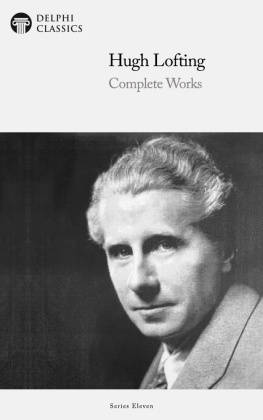
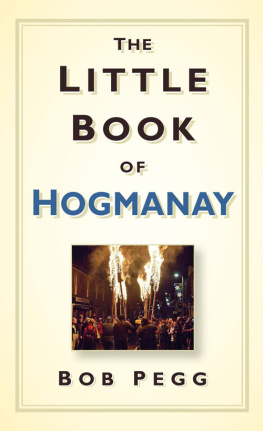
![Robert Hugh Benson [Benson - Robert Hugh Benson Collection [11 Books]](/uploads/posts/book/139831/thumbs/robert-hugh-benson-benson-robert-hugh-benson.jpg)

